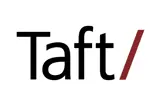Founded in 1885, Taft Stettinius & Hollister is one of Cincinnati’s largest law firms with offices in 8 cities and over 400 lawyers. The firm practices across a wide range of industries, in virtually every area of law, including Business and Finance, Litigation, Labor and Employment, Intellectual Property, Business Restructuring, Bankruptcy and Creditor Rights, Environmental, Health and Life Sciences, Private Client Services, Real Estate and Tax.
The business challenge
Meeting evolving demands of clients and professional users
With multiple organizational mergers that doubled the size of his firm in 10 years, Taft CIO Brian Clayton needed a way to manage his growing firm’s content and communications, all while exceeding expectations of the “new professional” users — the ones that are always connected, mobile, impatient, and with the knowledge and understanding of how to use technology. The new professional demands new ways of doing work, while at the same time, the new client is demanding new economics and greater agility.
Moving from a decentralized to a centralized architecture, needing to reduce the cost of ownership and wanting to invest in one highly optimized environment with current software, Brian needed to take a good hard look at their workspaces, how users want to work, and evolving client demands. The company needed a way to completely refresh — and to do so on an ongoing basis — so Brian set about finding the most effective solution.
Headquarters
Cincinnati, US
Industry
Legal
Products
iManage Work
Benefits
- Increased engagement by users — 70% adoption
- Reduced operational costs
- Addressed high-value areas such as mobility and remote work
- Integrated email management for users spread over four acquisitions
We are really focused on matter-centricity as more of a lifestyle than a product push by IT — somewhat like a diet or exercise program.
Brian Clayton, CIO, Taft
The solution
Refreshing the iManage implementation on a regular basis
The initial iManage implementation took place in 2006. Brian oversaw the migration from Worldox and implemented a drastic simplification of their file/folder structure with template types specific to each practice area.
But in a period of about six years starting in 2008, the firm doubled in size through four separate mergers. Each merger was reason for revisiting the data management system and adjusting the practice templates as new practice types came into the company, sometimes with different cultures. “Making ongoing adjustments allows us to be more responsive,” said Brian. “We try to keep every refresh project under three months.”
The most recent change saw them moving away from a practice-type folder model and mapping directly to the firm’s governance policy classifying items as client-owned, firm-owned, or firm-generated for the client. On top of this basic structure, practices could add additional practice-specific folders. “We stay in touch by being on the floor," emphasized Brian. "We don’t wait for requests to come in. We revisit the data management system every few years.”
In 2015, Taft centralized the iManage hardware implementation from across the offices providing a lower operational cost, more consistency, and more efficient document searching with consolidated stores. This centralization also played a key role in helping them achieve their ISO certification.
Taft is also in the final stages of moving to the newest version of iManage Work that will provide a more modern interface, with high-impact features such as Smarter Suggested Filing, platform enhancements, and security/communication upgrades.
A refresh commonly involves three steps, not necessarily taken in the same order: a review and update of the infrastructure (such as centralization); getting to a current software level; and adjusting the data management system structure to match how lawyers and the firm are functioning. The decision to leverage matter-centric collaboration was an important organizing principle for Taft. And it was not a one-time project: they continuously listen to the users — adapt, measure, then adapt again.
70%
Adoption
400
Lawyers
3
Month refresh timeline
Business outcomes
The refresh enables Taft to more effectively address high-value areas such as mobility and remote work and the need to enable agile work while maintaining governance. The refresh also enables better organization, more advanced collaboration, and integrated email management. Easy email filing is a key requirement for effective matter-centric collaboration at the firm.
Related content
Making Knowledge Work
Request a demo
Ready to see how iManage can make a difference to your organization?











